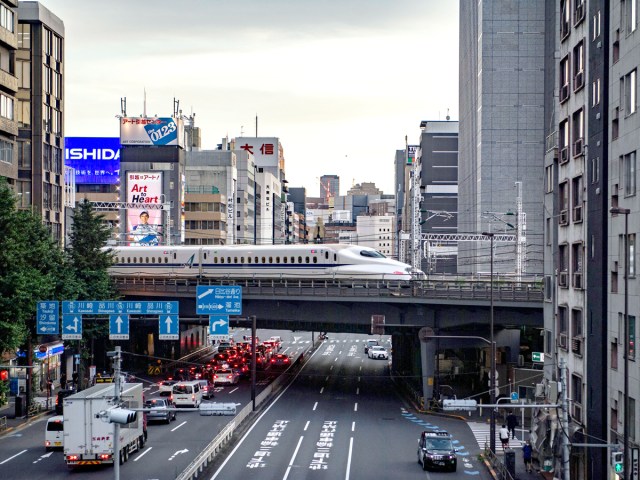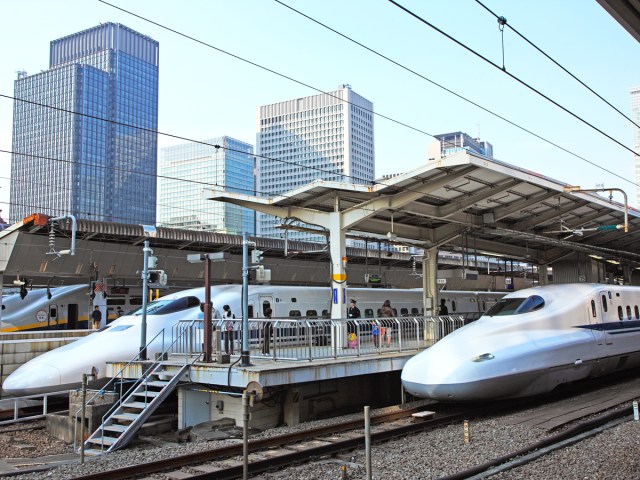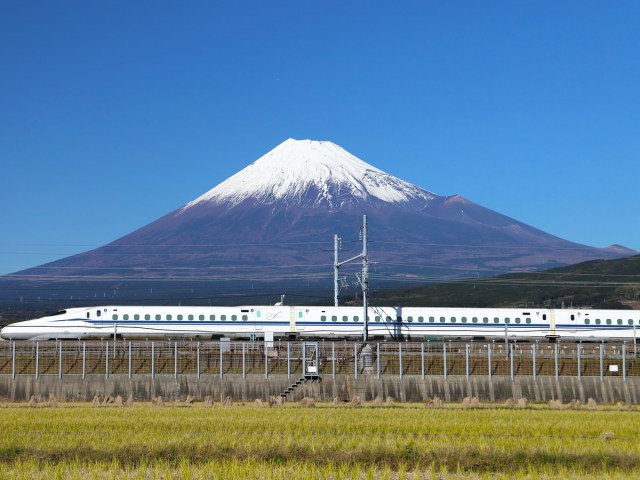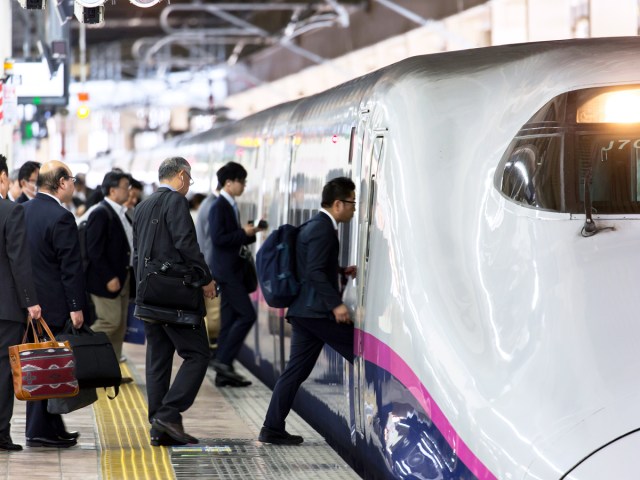Bullet trains are a popular form of public transportation throughout Japan. The country’s network of lightning-fast vehicles, known locally as Shinkansen, can reach speeds of up to 199 mph, making it quick and easy to travel around the country. While the technology of bullet trains is advanced to begin with, further cutting-edge innovations are on the horizon. One plan that’s currently in the works is the introduction of driverless bullet trains. Here’s when you can expect to see these new trains hit the rails — and how they’re expected to improve the passenger experience.
A History of Bullet Trains

Japan debuted its Shinkansen bullet train network in 1964, and there are currently nine lines serving 22 of the country’s major cities across the three main islands. It’s estimated that Japan’s bullet trains carry more than 420,000 passengers each weekday, transporting them at rapid speeds with ease. There are six major passenger railway companies in the country: JR East, JR Central, JR West, JR Hokkaido, JR Shikoku, and JR Kyushu. (“JR” stands for “Japan railway.”)
One of the most popular ways for visitors to take in Japan is to purchase an all-inclusive rail pass, which allows for unlimited train rides throughout the country. Moreover, Japan’s rail companies pride themselves on an impeccable safety record — according to the High Speed Rail Alliance, there have been zero passenger fatalities in the 60 years since Japanese bullet trains debuted.
The Driverless Goal

Driverless bullet trains are part of a larger vision known as the Transformation 2027 plan, which JR East — the largest railway in the country — introduced in 2018. According to The Japan Times, the company anticipates automated trains will streamline operations by making trains run more efficiently and on time. Furthermore, these computer-controlled trains should eliminate the risk of potential labor shortages.
JR East recently released a statement detailing how driverless trains will help them “adapt to changes in the social environment such as declining population and reforms in ways of how workers work.” Many Japanese industries have suffered due to the country’s overall population decline and resulting labor shortages. These automated trains aim to mitigate such issues once they are fully operational. However, initial estimates of a 2027 rollout are unlikely at this point, as trials on passenger trains are more likely to begin in early 2028, or perhaps even later.
Past Testing

The earliest tests for driverless Shinkansen were held in 2021 on a 3-mile stretch of track northwest of Tokyo, according to the website Japan RailPass. These tests were conducted aboard E7-series bullet trains, which are comparatively slower than the latest trains, as they can reach top speeds only around 160 mph.
The trains were remotely piloted between Niigata Station and a nearby stock depot, and tests were analyzed for four different factors. These included the train’s ability to start automatically, the capacity to stop at a specific point, the capability to automatically accelerate and decelerate, and whether or not the train could be remotely stopped in case of emergency. While these tests were largely successful, the company noted at the time that there was still room for improvement.
Future Plans

JR East plans to roll out driverless trains in waves, each with varying levels of automation. The earliest driverless trains with passengers aboard will run from Nagaoka to Niigata with a driver present in the cockpit in case of emergency; otherwise the train will function autonomously. During the next stage, the company anticipates testing passengerless trains without a driver or crew members aboard.
By the mid-2030s, the company plans to welcome commuters aboard trains with an empty cockpit — but staff members still present elsewhere aboard the train. These trains are planned to ride along the heavily trafficked Joetsu Shinkansen line from Tokyo to Niigata, and will mark a major step in the development of this new technology. There are also considerations to expand this technology to other bullet train lines, though there are no set plans to do so at this time.
What It Means for Passengers

While some may find the idea of riding aboard a driverless train to be unnerving, the company claims that this automated technology will improve safety and reduce human error, according to Kyodo News. The fully computerized system also ensures that trains will run as efficiently as possible, improving on the system’s already impressive reputation for punctuality. Plus, the lack of any physical cockpit means more available space on each train for passengers and their luggage.
More from our network
Daily Passport is part of Inbox Studio, which publishes content that uplifts, informs, and inspires.
















